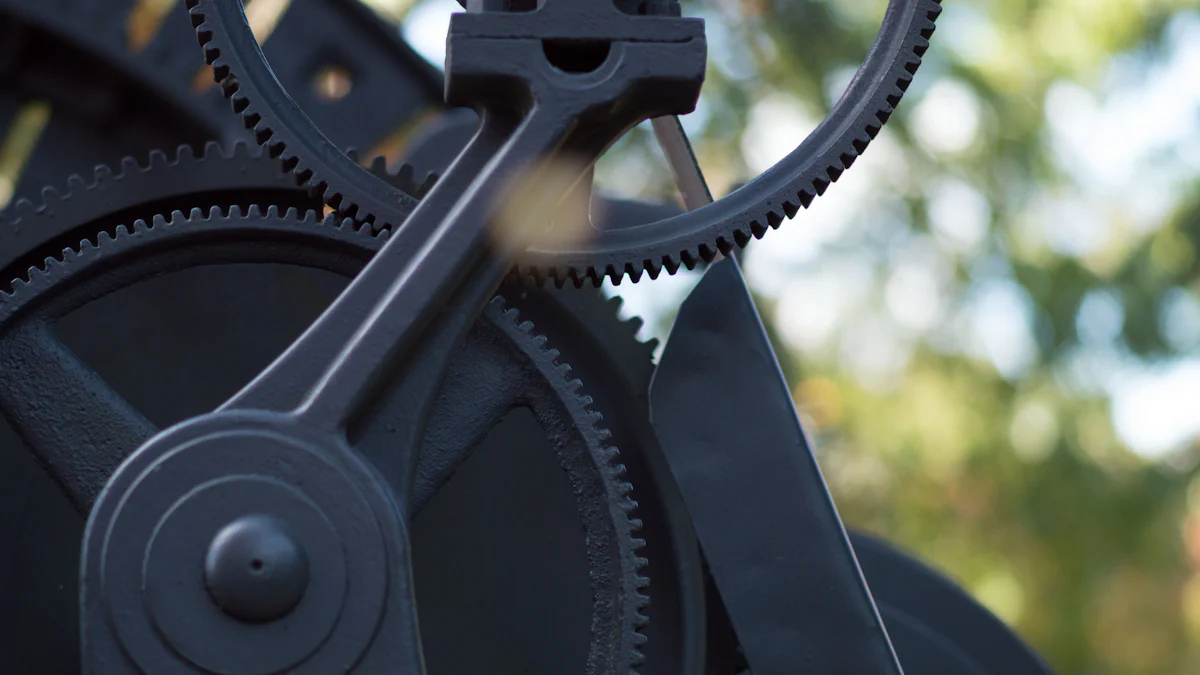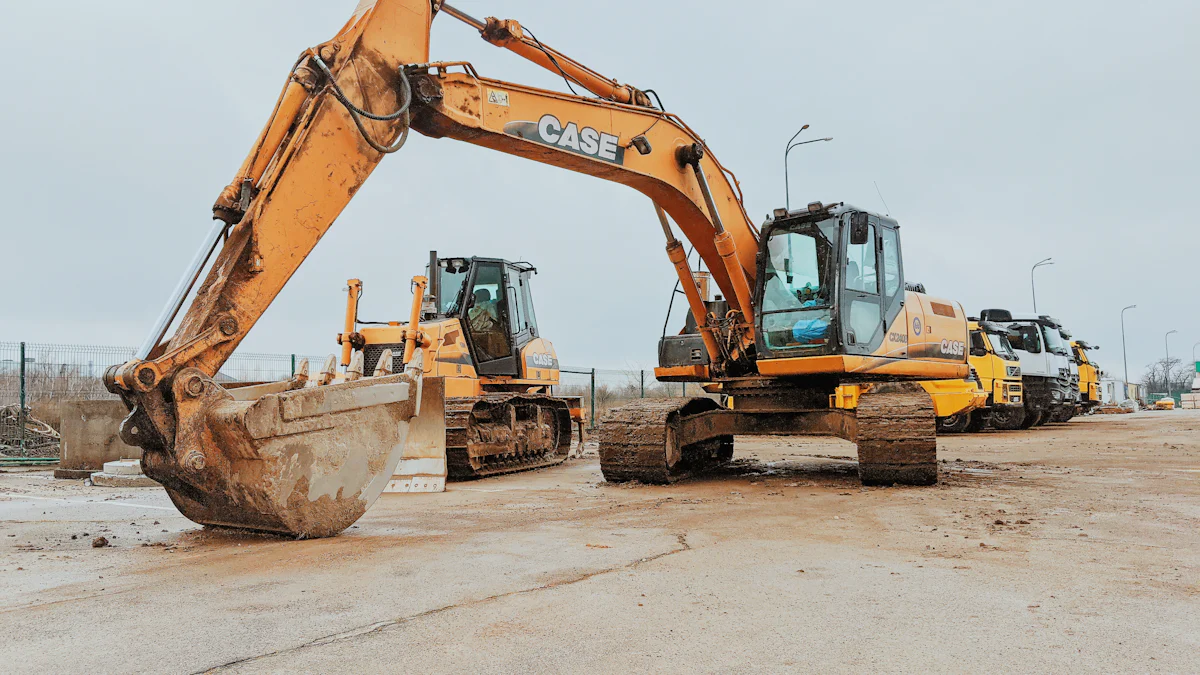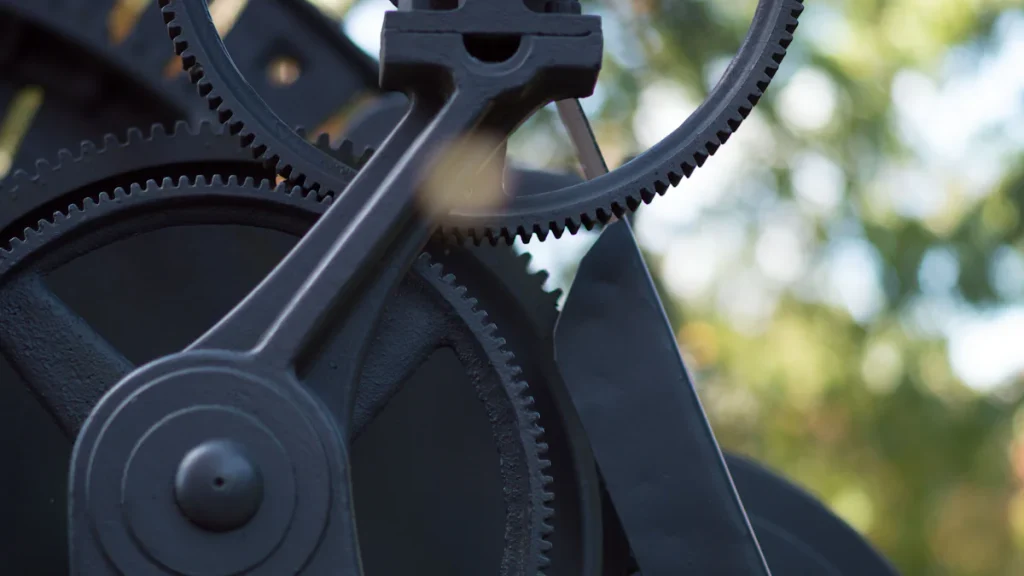
Finding the right link belt excavator parts diagram can simplify your equipment maintenance. You can rely on official resources, trusted online platforms, or physical manuals to locate accurate diagrams. These diagrams help you identify components and ensure proper repairs. YNF Machinery provides high-quality excavator parts and resources, making it easier for you to keep your machinery in top condition. With the right tools and information, you can maintain your excavator efficiently and avoid unnecessary downtime.
Key Takeaways
Go to the Link-Belt website to find parts diagrams. Enter your excavator’s serial number to get the correct diagram.
Check if third-party websites are trustworthy before using their diagrams. Read reviews to make sure the site gives accurate details.
Save your manuals and diagrams in one folder on your device. This helps you quickly find them when doing repairs.
Ask dealerships or repair shops for physical manuals and advice. They can help you find real parts and guide your repairs.
Join forums or social media groups to meet other owners. Sharing tips and resources can help you find diagrams easily.
Online Resources for Link-Belt Excavator Parts Diagrams

Official Link-Belt Website
Accessing the link belt excavator parts diagram using the serial number
The official Link-Belt website provides a user-friendly platform for accessing parts diagrams. You can use your excavator’s serial number to locate the exact diagram you need. This feature ensures that the diagram matches your specific model, reducing the risk of errors during repairs or maintenance. By entering the serial number, you gain access to detailed diagrams and manuals tailored to your equipment.
Feature | Description |
|---|---|
Parts Lookup Platform | Access parts diagrams and manuals by entering the machine’s serial number. |
Create Parts Inquiries | Submit inquiries for parts and connect with local dealers for assistance. |
Registration for New Users | Register to unlock access to the parts lookup platform. |
Benefits of using official Link-Belt resources
Using the official Link-Belt website ensures accuracy and reliability. The diagrams provided are up-to-date and specific to your excavator model. You can trust these resources to guide you through maintenance tasks without confusion. Additionally, the platform connects you with local dealers, making it easier to source genuine parts.
Third-Party Platforms for Link-Belt Diagrams
Trusted websites for linkbelt parts diagrams
Several third-party platforms offer access to Link-Belt excavator diagrams. Popular options include:
The Link-Belt Excavators Parts Lookup website, which provides diagrams and manuals specific to your equipment.
Heavy Equipment Forums, where you can find a dedicated thread for Link-Belt schematics. Users share information and answer questions, making it a valuable resource.
How to verify the credibility of third-party sources
When using third-party platforms, always verify their credibility. Check user reviews and ratings to ensure the site is trustworthy. Look for platforms that provide detailed and accurate diagrams. Avoid sources that lack transparency or fail to provide clear information about their resources.
Downloadable Manuals and Digital Resources
Finding downloadable PDF manuals for Link-Belt excavators
Many websites, including the official Link-Belt platform, offer downloadable PDF manuals. These manuals often include parts diagrams, making them a convenient resource for maintenance. Search for manuals specific to your excavator model to ensure compatibility.
Organizing and storing digital manuals for easy access
Once you download a manual, organize it for quick reference. Create a dedicated folder on your device and label files clearly. Consider backing up these files to cloud storage to prevent loss. Keeping your manuals accessible saves time during repairs and ensures you always have the information you need.
Offline Resources for Link-Belt Excavator Parts Diagrams
Physical Manuals and Guides
Obtaining physical manuals for linkbelt excavators
You can find physical manuals for Link-Belt excavators through several reliable sources. Many dealerships offer printed manuals when you purchase equipment. If you need a replacement, contact the manufacturer or authorized dealers. Some repair shops also stock these manuals for their customers. Additionally, online marketplaces often sell used or new manuals for older models. Always ensure the manual matches your excavator model to avoid confusion during repairs.
Advantages of using printed diagrams for repairs
Printed diagrams provide a clear and tangible reference during maintenance. You can place the manual next to your equipment, making it easier to cross-check parts without switching between screens. These diagrams remain accessible even in areas without internet access. They also allow you to make notes or highlight important sections for future reference. For complex repairs, having a physical guide can simplify the process and reduce errors.
Dealerships and Repair Shops
How dealerships can provide link belt excavator parts diagrams
Dealerships offer valuable resources for accessing parts diagrams. Many provide a parts lookup website where you can enter your machine’s serial number to find specific diagrams and manuals. This service ensures you receive accurate information tailored to your equipment. Dealerships also help you source genuine Link-Belt parts and answer questions about maintenance. Some, like ConEquip, connect you with suppliers offering high-quality aftermarket parts, including final drives and hydraulic cylinders.
Benefits of dealership services:
Access to genuine parts diagrams and manuals.
Assistance with parts inquiries and sourcing.
Availability of aftermarket parts at competitive prices.
Consulting repair shops for additional guidance
Repair shops often have experienced technicians who can guide you in using parts diagrams effectively. They may provide insights into common issues and recommend the best practices for repairs. Some shops also maintain a library of manuals and diagrams for reference. By consulting a repair shop, you gain access to expert advice and practical solutions for maintaining your excavator.
Networking with Industry Professionals
Joining forums or groups for shared resources
Networking with other professionals can help you find parts diagrams and maintenance tips. Join forums or social media groups dedicated to heavy equipment. Members often share resources, including diagrams and repair guides. These communities provide a platform to ask questions and learn from others’ experiences. Active participation can help you build a network of reliable contacts.
Collaborating with other excavator owners for diagram access
Collaborating with other excavator owners can be a practical way to access diagrams. Many owners keep physical or digital copies of manuals for their equipment. By sharing resources, you can save time and effort in locating the right parts diagram. This collaboration fosters a sense of community and ensures everyone benefits from shared knowledge.
How to Use a Link Belt Excavator Parts Diagram Effectively

Understanding the Diagram Layout
Key components and symbols in a link belt excavator parts diagram
A Link-Belt excavator parts diagram uses symbols and labels to represent various components. You will find icons for hydraulic systems, engine parts, and structural elements. Each symbol corresponds to a specific part, making it easier to identify what you need. Familiarizing yourself with these symbols helps you navigate the diagram quickly. Look for a legend or key on the diagram to understand what each symbol means. This step ensures you interpret the diagram correctly.
Identifying part numbers and descriptions
Each part on the diagram has a unique number and description. These identifiers help you locate the exact part required for maintenance or repairs. Cross-check the part number with your equipment’s manual to confirm compatibility. This process reduces errors and ensures you order the correct part. Keep a record of frequently used part numbers for future reference.
Using the Diagram for Maintenance and Repairs
Steps to locate and replace specific parts
To locate a part, start by identifying its section on the diagram. For example, if you need a hydraulic pump, focus on the hydraulic system area. Match the part number on the diagram with the one on your equipment. Once identified, follow the steps in your manual to remove and replace the part. Always double-check the diagram to ensure accuracy during installation.
Common maintenance tasks using the diagram
A parts diagram simplifies several maintenance tasks, including:
Failure finding tasks to detect hidden issues.
Inspections to assess the condition of components.
Scheduled discard tasks to replace parts at regular intervals.
Scheduled restoration tasks to overhaul equipment and restore performance.
Using the diagram ensures you perform these tasks efficiently and maintain your excavator’s reliability.
Troubleshooting with the Diagram
Diagnosing issues using the linkbelt parts diagram
When your excavator malfunctions, the parts diagram can help you pinpoint the problem. Compare the diagram with the affected area on your equipment. Look for signs of wear, damage, or misalignment. This comparison helps you identify the faulty part quickly, saving time during troubleshooting.
Cross-referencing with repair guides for effective solutions
After identifying the issue, use the diagram alongside repair guides. These guides provide step-by-step instructions for fixing problems. Cross-referencing ensures you follow the correct procedure and use the right tools. This approach minimizes errors and helps you restore your excavator to working condition efficiently.
Tips for Ensuring Diagram Accuracy
Matching the Diagram to Your Excavator Model
Finding the model and serial number of your excavator
To ensure you use the correct diagram, start by locating your excavator’s model and serial number. These details are usually on a metal plate attached to the machine. Common locations include the cab, engine compartment, or undercarriage. If you cannot find the plate, check your purchase documents or contact the manufacturer. Knowing this information helps you avoid mismatches when searching for diagrams.
Ensuring the diagram corresponds to your specific model
Once you have the model and serial number, verify that the diagram matches your excavator. Cross-check the diagram’s title or description with your machine’s details. Look for diagrams labeled with your exact model number. Using the wrong diagram can lead to confusion and incorrect repairs. Always confirm compatibility before proceeding.
Avoiding Common Mistakes
Double-checking part numbers before ordering
Before ordering replacement parts, double-check the part numbers on the diagram. Compare them with the numbers listed in your equipment manual. This step ensures you receive the correct components. Ordering the wrong parts can delay repairs and increase costs. Keep a record of frequently used part numbers for future reference.
Verifying updates or revisions to diagrams
Manufacturers occasionally update diagrams to reflect design changes or improvements. Check for the latest version of the diagram on the official website or through your dealer. Using outdated diagrams may result in errors during maintenance. Always verify that you have the most recent version available.
Keeping Diagrams Accessible
Organizing digital and physical copies for quick access
Store your diagrams in an organized manner to save time during repairs. For digital copies, create a dedicated folder on your computer or cloud storage. Label files clearly with the model and serial number. For physical copies, use a binder or folder to keep them safe and easy to find. Proper organization ensures you can quickly locate the information you need.
Sharing diagrams with your maintenance team
Share diagrams with your maintenance team to streamline repairs. Provide both digital and physical copies if possible. This practice ensures everyone has access to accurate information. It also reduces the risk of errors during maintenance tasks. Collaboration improves efficiency and keeps your excavator in top condition.
Tip: Always back up digital diagrams to prevent loss due to hardware failure or accidental deletion.
How YNF Machinery Supports Your Excavator Maintenance
High-Quality Excavator Engine Parts
Ensuring compatibility with Link-Belt excavators
YNF Machinery provides engine parts designed to fit a wide range of Link-Belt excavators. These parts meet or exceed OEM standards, ensuring they work seamlessly with your equipment. Whether you need pistons, gaskets, or fuel pumps, YNF Machinery offers components that match your excavator’s specifications. This compatibility reduces the risk of installation issues and ensures reliable performance.
Benefits of using YNF Machinery’s engine parts for repairs
Using high-quality engine parts from YNF Machinery offers several advantages. Regular maintenance with these parts ensures your excavator operates at peak efficiency. It minimizes the risk of unexpected breakdowns and prevents premature wear. You can rely on these parts to maximize your equipment’s reliability.
Benefit | Description |
|---|---|
Extended service intervals | High-performance main fuel filter increases uptime. |
Reduced downtime | High-performance fuel pre-filter reduces waste by half. |
Enhanced performance | 1,000-hour engine service interval lowers total cost of ownership. |
Durable Excavator Couplings for Link-Belt Models
Enhancing power transmission with YNF Machinery’s couplings
Excavator couplings from YNF Machinery ensure efficient power transmission between the engine and hydraulic pump. These couplings handle misalignment and vibration, maintaining smooth operation under tough conditions. Their robust design enhances the performance of your Link-Belt excavator, reducing wear on connected components.
Why YNF Machinery’s couplings are ideal for linkbelt excavators
YNF Machinery’s couplings stand out due to their durability and precision. They are crafted from high-quality materials, ensuring long-lasting performance. These couplings are easy to install and maintain, saving you time during repairs. Their ability to handle high torque and vibration makes them a reliable choice for heavy-duty applications.
Reliable Hydraulic Cylinder Seal Kits
Preventing oil leaks with YNF Machinery’s seal kits
Hydraulic cylinder seal kits from YNF Machinery effectively prevent oil leaks, conserving hydraulic fluid and reducing refill costs. These kits maintain optimal pressure levels, ensuring your excavator performs at its best. By using these seal kits, you can lower maintenance costs and avoid extensive damage to your equipment.
Ensuring long-term performance with high-quality materials
YNF Machinery’s seal kits are made from premium materials, ensuring durability and flexibility. To achieve long-term performance, consider factors like fluid compatibility and operating conditions. These kits are designed to handle high pressure and temperature, making them suitable for demanding environments. Proper selection and installation of these kits ensure safety and reliability during operation.
Tip: Always choose seal kits that match your excavator’s specifications to prevent misalignment and ensure peak performance.
Reliable link belt excavator parts diagrams play a crucial role in maintaining your equipment. You can use online platforms, physical manuals, and trusted suppliers like YNF Machinery to access accurate diagrams and high-quality parts. Always confirm the diagram matches your excavator model to avoid errors. Keep these resources organized for quick access during repairs. With the right tools and knowledge, you can simplify maintenance and ensure your excavator operates efficiently for years to come.
FAQ
What is the best way to find a Link-Belt excavator parts diagram?
You can find diagrams through the official Link-Belt website, trusted third-party platforms, or physical manuals. Use your excavator’s serial number to ensure accuracy. These resources provide detailed diagrams tailored to your equipment.
How do I ensure the diagram matches my excavator model?
Locate your excavator’s model and serial number on the machine or purchase documents. Cross-check this information with the diagram’s title or description. Always verify compatibility before using the diagram for repairs.
Can I use a parts reference guide for maintenance?
Yes, a parts reference guide simplifies maintenance by providing detailed information about components. It helps you identify parts quickly and ensures you use the correct replacements. Keep it accessible for efficient repairs.
Where can I get physical manuals for Link-Belt excavators?
You can obtain physical manuals from dealerships, repair shops, or online marketplaces. Ensure the manual matches your excavator model to avoid confusion during maintenance tasks.
Why should I organize my digital diagrams?
Organizing digital diagrams saves time during repairs. Create a dedicated folder on your device and label files clearly. Back up these files to cloud storage to prevent loss and ensure quick access when needed.





